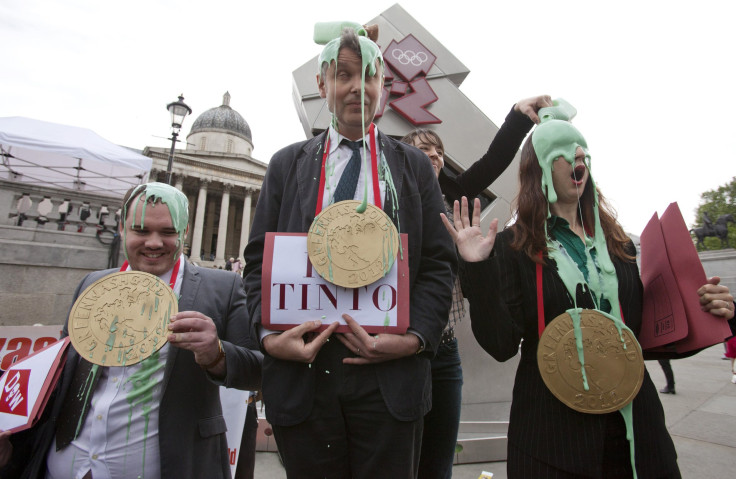Green Marketing Without Greenwashing: AdAge Report Aims To Demystify FTC Green Guides

As companies strive to create more environmentally friendly products, one of the biggest challenges for marketers is how to pitch those products without “greenwashing,” a term applied to marketing spin that makes deceptive or exaggerated environmental claims.
It’s an issue we’re seeing more and more of these days. Last month, as International Business Times reported, the Coca-Cola Company (NYSE:KO) was accused of overstating the environmental benefits of its PlantBottle packaging, using marketing materials that included excessive green coloring, environmentally friendly images (butterflies, flowers, etc.) and a circular logo that mimicked the universal symbol for recycling. In response, a high-ranking Danish consumer official requested that the multinational beverage giant revamp its pitch.
But before companies can avoid greenwashing, they have to be able to recognize it. And in an industry where research and development are evolving at an increasingly rapid pace, that’s not always so easy. Jacquelyn Ottman, an independent consultant who focuses on green marketing and eco-innovation, said greenwashing often begins not as intentional deception by corporate giants but as well-meaning ideas cooked up by Madison Avenue executives who may not grasp the finer intricacies of green technologies and their benefits.
“A lot of greenwash is inadvertent,” she said in a phone interview. “The ad agency people really don’t understand this that well, and so they misguide the clients. And the clients don’t understand it enough to say, ‘Thank you very much, but we’re not going to go there.’”
Ottman worked in advertising for 12 years before she founded J. Ottman Consulting Inc. in 1989. She said that high-profile stories about exaggerated claims by Coca-Cola may attract the lion’s share of attention, but it’s often smaller companies, which lack the manpower to put their marketing materials through a legal litmus test, that find themselves on the receiving end of greenwashing accusations.
“It’s usually the little guys,” she said. “Larger companies have 12 legal guys on staff. They have clearance from magazines. They have a long history of avoiding making deceptive claims in general.”
The Federal Trade Commission published its first-ever “Green Guides” in 1992, an effort to provide a set of best practices that can help marketers avoid making deceptive green claims. Last year, the FTC guides were updated for the first time since 1998. Ottman said green marketing has seen a lot of changes in those 14 years, including the introduction of phrases such as “sustainable” and “renewable,” which can serve as helpful descriptions when used accurately but can just as easily descend into empty jargon.
In an effort to codify the recent changes to the FTC guides, Ottman coauthored a new report, “How to Make Credible Green Marketing Claims,” which was released Monday by Advertising Age. In it, Ottman and her coauthor, David Mallen -- deputy director for legal affairs at the National Advertising Division (NAD) -- present a detailed discussion of what’s new to the FTC guides. The 48-page report also includes information on why it’s important for marketers to make credible green claims, and how companies risk damaging their reputations when they don’t. The goal, Ottman said, is to help demystify the legalese-heavy green guides for marketing professionals who are tasked with conveying a product’s environmental benefits to the general public.
“Until now, nobody’s tried to translate all of this for your day-to-day marketing people,” she said. “The lawyers can read it but the marketing people can’t.”
Ottman said that most greenwashing disputes are resolvedsor by the NAD, a self-regulatory body housed within the Better Business Bureau. The division keeps a running list of advertising-industry disputes on its website. “Everybody wants to stay out of court,” Ottman said. “It’s faster, it’s cheaper and what have you.”
A champion of environmental issues since childhood, Ottman was a freshman in high school in 1970, when she attended the first Earth Day. “What bullying is in the United States right now to high school kids, the environment was our big cause,” she said. “I’m a classic baby boomer that way.”
But she lamented that the green efforts of companies today all too often involve fine-tuning existing products, rather than creating products with the environment in mind. She cites Tom’s of Maine, the all-natural toothpaste brand. While she commends its recyclable aluminum tube, she said her ultimate goal is to help companies okokbrainstorm innovative products that would do away with the tube altogether -- not to mention the toothbrush, the water and the box the tube comes in.
“That’s what I want to have a hand in doing,” she said. “You can’t solve these problems by tweaking existing products. You can’t tweak your way to green.”
© Copyright IBTimes 2024. All rights reserved.






















